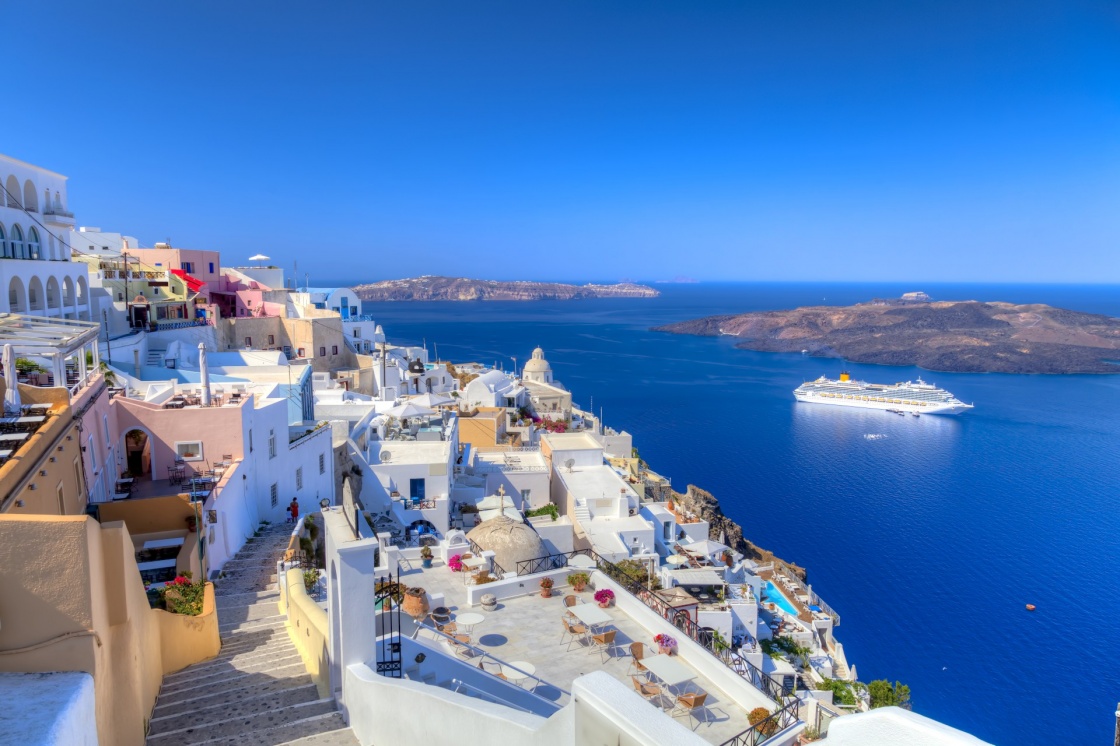Santorini is one of the southernmost islands of the Cyclades group of islands, along with Anafi. The island is mostly known for its volcano, the biggest eruption of which took place 3,600 years ago, destroying parts of the island and causing a tsunami that obliterated the Minoan civilization of Crete. Before this eruption, the island was called Stroggyli, due to its circular shape, but the eruption caused the creation of two more separate islands, Thirasia and Aspronisi. These two islands, along with Santorini, form a circle in the middle of which is the caldera. After another volcanic eruption that occurred in the 17th century, two more small islands were formed in the caldera, Nea Kameni and Palaia Kameni.
The total land area of Santorini is 76.19 km2 and its highest point is Profitis Ilias at an altitude of 567 meters. According to the 2011 census, the island's population is 15.250, while the number of visitors during high summer season can reach up to 2 million people.
The island may have a dry climate, but its people have managed to successfully cultivate high quality crops like cherry tomatoes, cucumbers, fava beans and many more that are popular all over the country. The island's wine production is also highly acclaimed, since some of its vineyards date back to the ancient times and produce wines like Assyrtiko, Nychteri and Vinsanto which are widely popular and have been awarded worldwide.
Santorini is an island with rich history that dates back to the ancient times. The ruins of an ancient civilization were discovered in 1963 in the Akrotiri area of the island, uncovering more information about the civilization which inhabited Santorini in 2000BC, before it was buried under the volcanic ash in 1650BC.
Because of its unique landscape, its long history and, of course, its world-famous sunsets, Santorini is an island that tops the rankings nationally and internationally. Some other Greek islands that frequently compete with Santorini are Zante (Zakynthos), Kefalonia and Mykonos.










 'Santorini island,Greece' Anastasios71 / Shutterstock
'Santorini island,Greece' Anastasios71 / Shutterstock